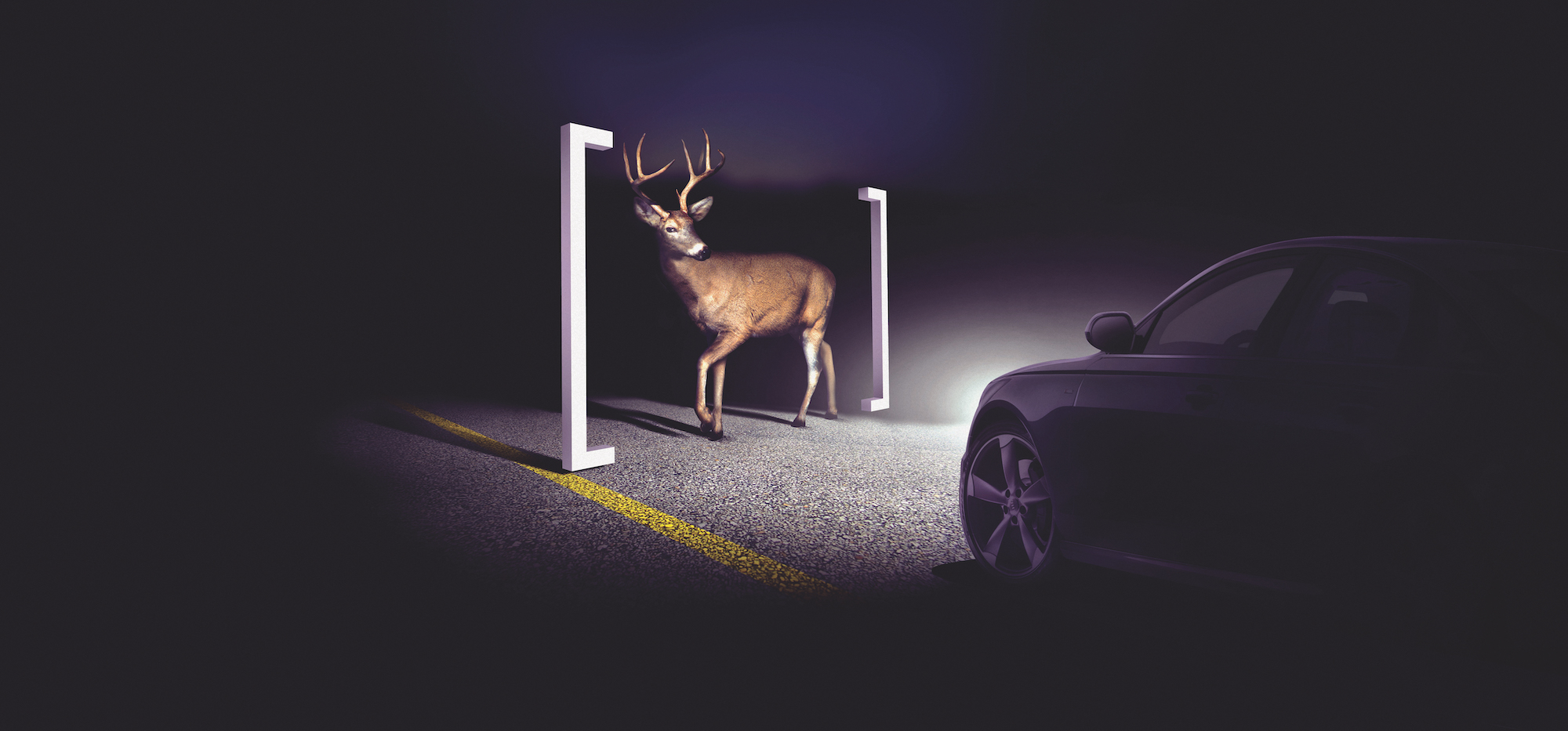Pedestrian deaths by car surged 19 percent from 2019 to 2022. And according to AAA, three-quarters of all pedestrian fatalities occur after dark. Automotive technology supplier Magna is actively trying to change that, with thermal technology installed on 1.2 million vehicles and counting.
Originally named “Night Vision” and introduced on the 2005 BMW 7 Series, Magna’s thermal sensing product sees the road ahead up to four times farther than the typical headlight range. Currently available on 40 different vehicle models across 13 manufacturers like Bentley, BMW, Audi, Volkswagen, Porsche, and examples from Stellantis (Dodge, Fiat, Ram, Peugeot, Jeep, and more) and GM, this technology was created to reduce pedestrian and cyclist deaths.
This is how it works.
“Eyes” that see the road ahead with thermal sensing
A microbolometer, or an uncooled thermal sensor, started out as military technology in the late 1970s. The U.S. government declassified the technology after the 1991 Gulf War, and use of thermal imaging was introduced to municipal firefighting services to help firefighters see through smoke. Before that, first responders had to rely on the slow process of clearing each room individually by touch and visual cues.
In the security world, thermal cameras are becoming even more popular. Airports use them for perimeter defense, and during the 2002-2004 SARS outbreak, airports used them to measure passenger temperatures.
The latest generation of Magna’s technology offers improved road coverage, enhanced detection capabilities, and a sharper image for drivers through fog, smoke (a key factor for those impacted by wildfires), snow squalls, or in complete darkness. Since thermal cameras do not “see” visible light, this system isn’t affected by the headlights of oncoming vehicles or glare from the sun, Magna says. With distracted driving becoming more and more of a problem, automakers and tech companies like Magna are aggressively pursuing solutions.
“Even during the day, there are instances where smoke or fog could impair vision,” says Richard Seoane, Magna’s vice president of operations and business development in the thermal product area. “Drivers heading into smoke might think it’s just a short distance to find it’s a mile long; this was the case in Louisiana last year, when fog caused a 158-car pileup.”
How Magna works
An infrared video camera is mounted in front of the vehicle that senses temperature differences of less than 1/10th of a degree to create a highly detailed thermal image of the roadway scene. Using convolutional neural networks, the software creates three-dimensional data for image classification and object recognition tasks.
In turn, the algorithm is trained to be able to classify these objects within the field of the image, including pedestrians, buses, motorbikes and more. Seaone says the system predicts the vector of travel, which helps the driver in numerous ways . For example, pedestrians don’t move fast, but animals and bikes do. Knowing that information helps driver-assist programs adapt and adjust to avoid a crash.

“Our algorithms detect animals, pedestrians, and cyclists more than 100 meters ahead of the vehicle to alert drivers of such hazards,” Seoane says. He explains that the algorithms can run in a car’s dedicated ECU (electronic control module) or be hosted by a manufacturer’s central computer unit.
While human eyes can’t register the infrared spectrum, thermal sensing systems can. By detecting very small temperature differences, the technology can differentiate between a mailbox, a deer, or a human, Magna says.
Earlier versions of thermal sensing systems were too large to fit in a trunk. Today, Magna’s camera is quite small–about the size of a golf ball–and it’s about to get even smaller. The company’s next-gen thermal sensing technology is targeted to debut next year, and it will also include increased visual range to 360 degrees. What that means is better visibility all the way around even in the dark, which addresses back-over accidents that occur primarily with children or small pets. It’s also slated to detect information up to three football fields, which increases stopping time, and potentially saves more lives.
